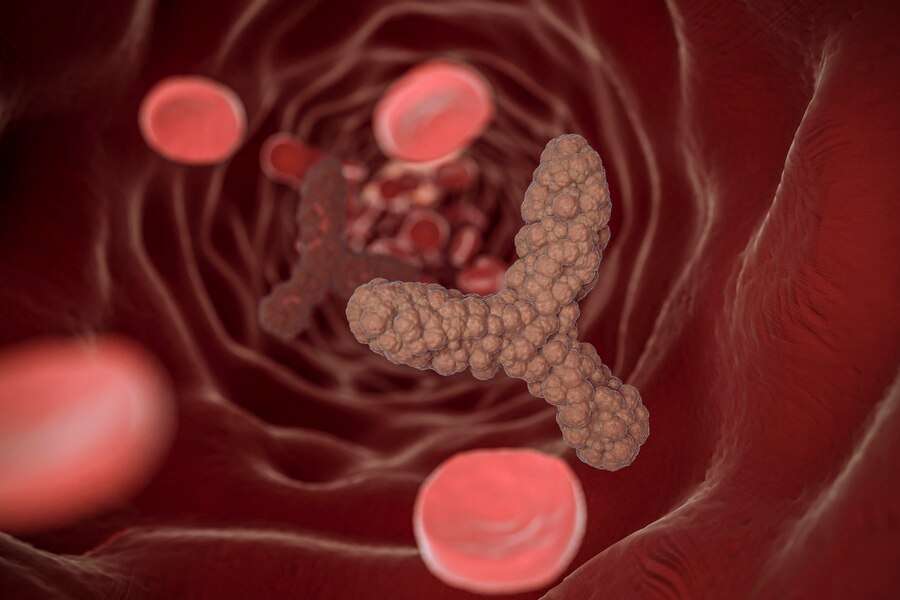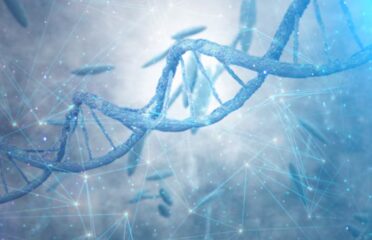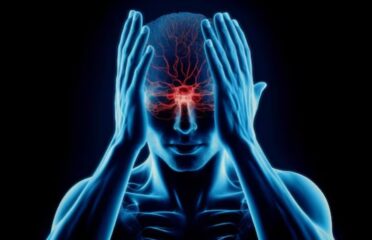Fabry Disease
Overview

Fabry disease, also called alpha-galactosidase-A deficiency, is a type of lysosomal storage disorder. It is an inherited neurological disease that occurs when the enzyme alpha-galactosidase-A cannot efficiently break down fatty materials known as lipids into smaller components that provide energy to the body.
The mutated gene allows sphingolipids to build up to harmful levels in the body's autonomic nervous system (the part of the nervous system that controls involuntary functions such as breathing and heartbeat), as well as in the eyes, kidneys, and cardiovascular system. It eventually affects the heart, central nervous system, the skin, the brain, and the kidneys.
Enzyme replacement and oral therapy can help prevent serious complications.
Symptoms
Symptoms of Fabry disease are usually seen during childhood or adolescence. Neuro signs may include:
• Burning pain in the arms and legs, which worsens in hot weather or following exercise- Intolerance to heat or cold.
• Accumulation of excess material in the layers of the cornea, resulting in clouding but showing no change in vision
• Impaired circulation may lead to stroke or heart attack because of the fatty storage in blood vessel walls.
• There may be other symptoms such as -
-Decreased sweating
-Heart enlargement
-Progressive kidney impairment leading to renal failure
-Gastrointestinal difficulties
-Fever
-Raised darker skin lesions called Angiokeratomas, on the chest, genital area, and back
• Extreme pain during physical activities
Causes & Risks
• Fabry disease is an inherited disorder that results from the build-up of a type of fat, called globotriaosylceramide. Beginning in childhood, this build-up causes signs and symptoms that affect many parts of the body.
• Fabry disease is a rare genetic disorder caused by mutations in the GLA gene, leading to a deficiency of an enzyme called alpha-galactosidase A (α-Gal A). This enzyme deficiency results in the accumulation of a fatty substance called globotriaosylceramide in various cells and tissues throughout the body.
• The primary cause of Fabry disease is the inheritance of a defective gene usually from the mother.
The risk factors related to Fabry disease may be…
• Individuals with a family history of Fabry disease have a higher risk of inheriting the defective gene and developing the condition. Inheriting a specific genetic mutation in the GLA gene from one or both parents is the primary risk factor for Fabry disease.
• Fabry disease primarily affects males due to its X-linked inheritance pattern. Females who carry the defective gene might experience milder symptoms or may remain asymptomatic.
• The age of symptom onset and the severity of symptoms can vary among individuals with Fabry disease, even among family members with the same genetic mutation.
Test & Diagnosis
• To diagnose in males, a blood test measures the level of the alpha-GAL enzyme. If the alpha-GAL enzyme test shows low enzyme activity, then it confirms that the person has Fabry disease. For females, a DNA test is needed.
• The diagnosis of type 1 classic phenotype can be made clinically by physicians who recognise the characteristic findings of episodic pain in the extremities, absent or decreased sweating, typical skin lesions (angiokeratoma), gastrointestinal abnormalities, and corneal dystrophy.
• The disease progresses to renal insufficiency, and heart and cerebrovascular disease in adulthood.
• In type 2 males, the diagnosis may be made in adulthood when the cardiac or kidney disease becomes manifest.
• Many males with the type 2 later-onset phenotype have been diagnosed by screening patients in hemodialysis, cardiac, and stroke clinics.
• The diagnosis of both type 1 and 2 males is confirmed by demonstrating the enzyme deficiency and by identifying the specific GLA gene mutation.
Treatment
• Fabry disease causes multi-organ dysfunction and patients need a comprehensive, multi-disciplinary treatment plan that is individually tailored and includes specific therapies that target abnormal substrate accumulation and adjuvant therapies that address end-organ damage.
• Enzyme replacement therapy (ERT) is the cornerstone for the treatment of Fabry disease and synthetic enzyme, produced by recombinant DNA technology, is infused intravenously. ERT replaces the missing enzyme and reduces the accumulated glycolipids in cells throughout the body.
• It is administered by intravenous infusion usually every two weeks. The dosage approved is 1 milligram per kilogram of body weight.
• Drinking plenty of fluids, avoiding overheating or overexerting the body, and taking frequent naps or breaks, can help reduce pain episodes, as well as other symptoms of the disease.
Living With
As Fabry disease is a chronic, progressive, and multisystemic disorder, living with it can present various challenges. Individuals affected by Fabry disease face several aspects that impact their daily routine-
Close monitoring by the doctor is essential to check disease progression and adjust treatment strategies as required.
Fabry disease manifests with a range of symptoms, including chronic pain, gastrointestinal issues, skin abnormalities, fatigue, and intolerance to heat or exercise due to the accumulation of fatty substances.
Accumulation of globotriaosylceramide can affect various organs, leading to kidney dysfunction, heart problems such as cardiomyopathy, and nervous system issues - including neuropathic pain, stroke, or hearing loss.
Enzyme replacement therapy (ERT) is a very common treatment for Fabry disease, aiming to reduce the accumulation of Gb3. Supportive care and medications may also be used as additional care to manage specific symptoms.
Complications
• Fabry disease, a rare genetic disorder caused by a deficiency of the enzyme alpha-galactosidase A, leads to the accumulation of a fatty substance called globotriaosylceramide (Gb3) in various cells and organs throughout the body.
• One of the most significant complications of Fabry disease is kidney involvement. Gb3 accumulation in the kidneys can lead to kidney damage, the presence of protein in the urine, renal impairment, and finally, kidney failure.
• The accumulation of Gb3 in the heart can cause various cardiovascular issues, including cardiomyopathy (enlargement or thickening of the heart muscle), arrhythmias (irregular heartbeats), and an increased risk of heart attacks and strokes.
• Fabry disease can affect the nervous system, leading to neurological complications.
• Skin manifestations in Fabry disease include angiokeratomas and small dark red or blue skin lesions. Corneal opacities, clouding of the cornea, can also occur and might affect vision in some individuals.
• Patients with Fabry disease experience gastrointestinal symptoms like abdominal pain, diarrhoea, nausea, and vomiting, which can significantly impact daily life.





